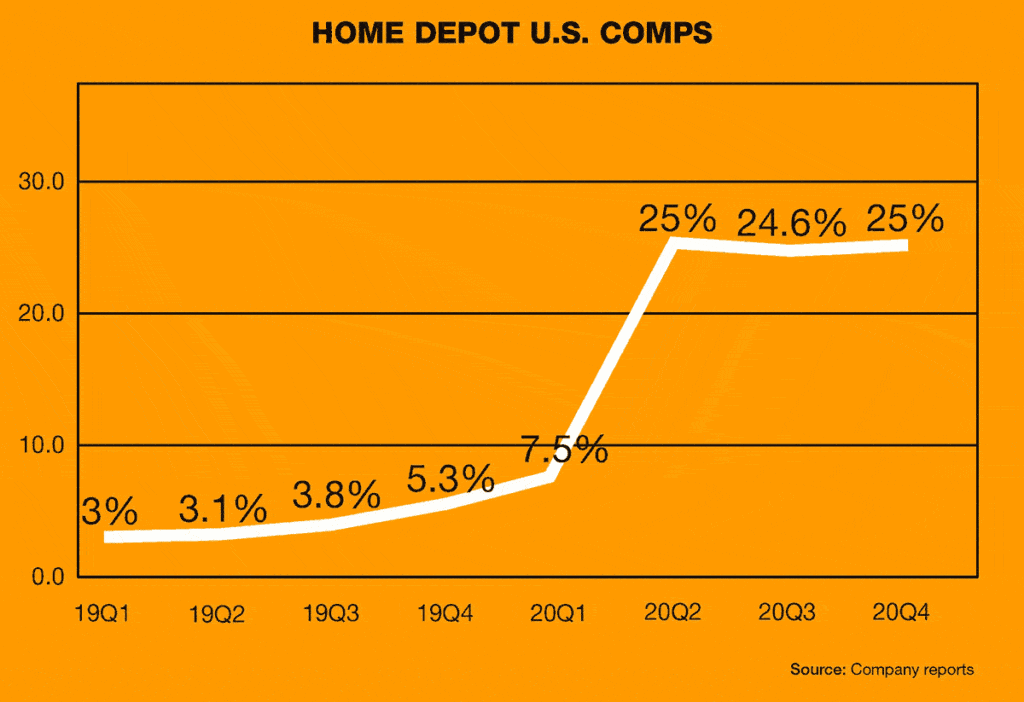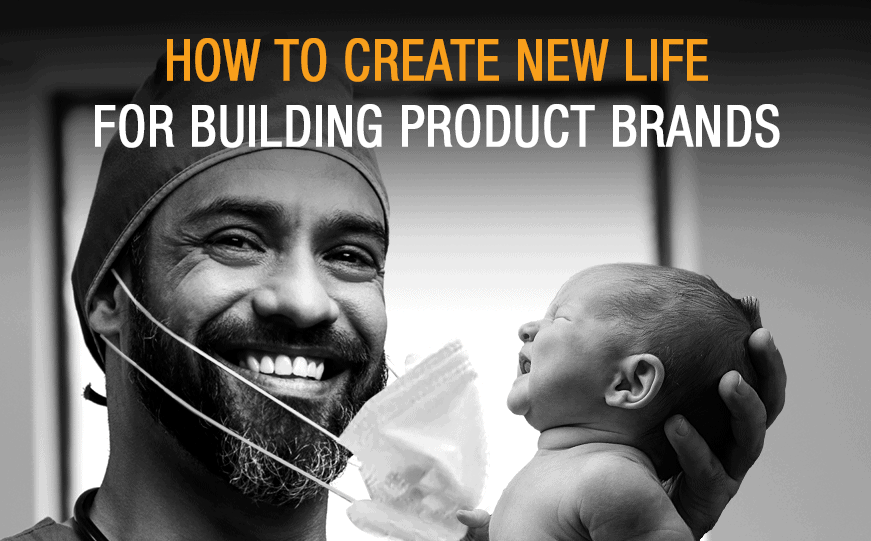Yes, history certainly has a habit of repeating itself. So, in many ways, perhaps it shouldn’t be a surprise that the times we are currently facing seem reminiscent of those experienced following the Spanish Flu in 1918. While similarly disruptive at that time — when the pendulum swung back 100 years ago — society then ushered in a period of change with increased wealth and prosperity.
Much of the success achieved in “The Roaring Twenties” began with advancements in technology that were introduced when the virus of that era subsided. In fact, a number of important innovations significantly improved quality of life in the twenties… household appliances, including refrigerators and washing machines, were just some of the products that would forever change the world for the better. Ultimately, the period served as a much-needed light at the end of a tunnel for many homeowners.
Home Is Where the Market Is
When construction came to a temporary halt last March, few predicted that the industry would rally a year later. Many city dwellers traded in their office commutes for up-and-coming urban neighborhoods, where they found more home — and outdoor living space — for their money.
After a slow start, vaccines are now being made more widely available — with new virus cases and hospitalizations down 70% — leading some health experts to suggest we’ll achieve significant herd immunity this summer. Despite some concerns for rising interest rates and nascent hints of inflation, the economy is triumphantly rebounding. And, while many stay-at-home orders remain in effect — and a pending stimulus program is designed to prime economic conditions further — the single-family residential market is surging to a decade-high peak. Bolstered by historic low mortgage rates. And scarce housing inventory.
This unique set of circumstances has created a windfall of earnings for the construction and building product industries. And why not? A healthy residential construction market is enjoying lower employment costs and other operating expenses, as profit margins for building product brands have reached near all-time highs.
Keep on Growin’
Zonda’s New Home Pending Sales Index rose by 28.1% year over year in January. Ali Wolf, chief economist, explained, “The spring selling season waited for no one this year as many people were still working from home and reevaluating their living situation, mortgage rates were still seriously low, and available homes for sale were still limited. The demand environment is about as good as it gets in the housing market… so hot right now, that camp-outs are back at select communities. And some builders have reported hitting the best weeks and/or months in the history of their companies.”
Builders and contractors are scrambling to meet the needs of the market while navigating supply chain constraints. And building product brands are benefiting from the shift in consumer attitudes, as a growing number of homeowners look to remodel. Whether updating their homes for eventual sale or to help generational cohorts more comfortably age-in-place, homeowner demand for new residential construction products has contributed to what has become a record-breaking start to the year.
Consider that the nation’s leading professional building supply dealer, Builder’s FirstChoice, saw its core organic sales rise 15% during the fourth quarter. Chad Crow, CEO said, “Record fourth-quarter results reflect an exceptional finish to a year of remarkable performance, despite the challenges in 2020.”
Other building product manufacturers and retailers are experiencing similar gains. Masonite, maker of interior and exterior doors, saw a net income increase of more than 50% from 2019 to 2020. President and CEO Howard Heckes attributes the company’s recent growth to “strengthening demand” in the residential sector.
As we’ve written about recently, The Home Depot also experienced an outstanding 2020. The mega retailer’s fourth-quarter earnings exceeded investors’ expectations, as consumers spent more money on home improvement as a result of the pandemic and strong real estate market. U.S. same-store sales grew by 25%, higher than the 19.2% growth that analysts anticipated.

Shifting Priorities
The post-pandemic home reflects the lifestyle adjustments that have taken place over the last year. For many homeowners, it’s all about abundance… whether that’s in square footage, appliance size, or storage space for a colossal toilet paper haul. More than ever before, people want their homes to comfortably — and conveniently — accommodate their evolving lifestyles. This has led to homeowners investing in their properties at an increasing rate. According to a study conducted by the National Association of Realtors, 77% of homeowners have renovation budgets equal to or greater than that of last year. From opting for larger, more functional kitchens to less open floor plans and dedicated home offices, learning spaces and “Zoom rooms” to focusing on their outdoor spaces, homeowners are adapting to “the new normal.”
The Future (of Housing) Looks Bright
Sentiment is evolving from “hesitation to hope” — with an anticipated surge from homebuyers and their pent-up demand — which building product brand marketers are looking to capture. They are so confident, in fact, that many of our clients are considering their biggest marketing pushes ever this season. And we’re not alone. The CMO (Chief Marketing Officer) Council reported that 65% of members expect to increase marketing spend this year as brands look to recoup lost revenue from last year.
One K&A client told us this week, “with refunds in our pocket from IBS/KBIS, we’re looking to keep one step ahead of our competitors.”
Their primary concern is, “how can we get out in front of the market by early summer?” Building product brands feel very confident and they’re not going back to offering pre-pandemic brand experiences. Top on their list is Sales and Marketing alignment strategies, designed to better convert new prospects and gain back lost suspects. In fact, companies with aligned Sales and Marketing teams are 67% better at closing deals and experience 35% higher customer retention.
The current pandemic has resulted in some unexpected outcomes, not too different from what was experienced more than a 100 years ago, when the Spanish Flu was a catalyst for the advent of the Roaring Twenties. The thriving housing market coupled with the growing demand for home remodels has translated into substantial financial gains for the construction and building product industries. Will these gains continue? Only time will tell… but — if history is any indicator — we’re betting they will.
Interested in considering a Sales and Marketing audit to learn how your building product brand can better convert — and retain — more customers? Send an email to Steve Kleber at sk@kleberandassociates.com.




